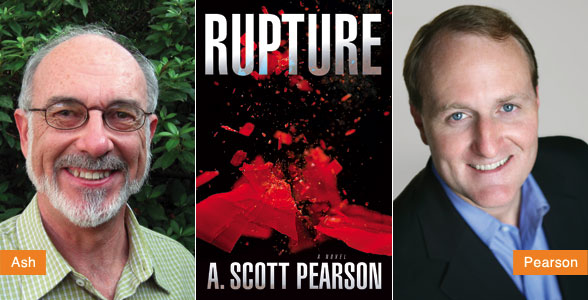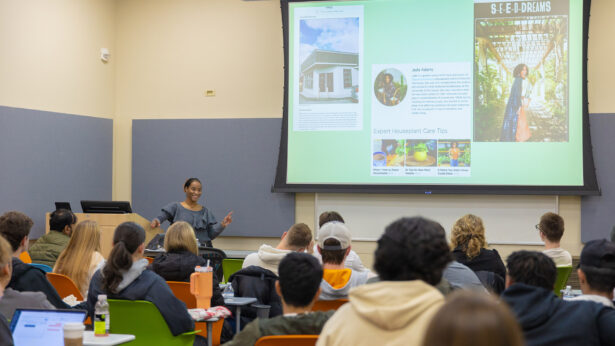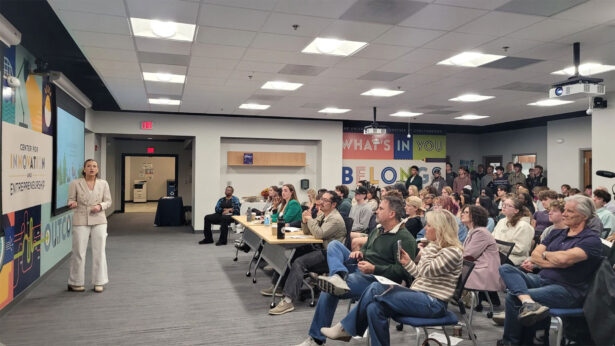African American Role Explored
The pieces fell slowly into place when Steve Ash “discovered” a little-known mission that may have influenced the outcome of the Civil War.
Ash, UT Knoxville professor of history, was searching for a moment of microhistory to serve as the subject of a book. He spent more than a year digging before he found the incident that became Firebrand of Liberty: The Story of Two Black Regiments that Changed the Course of the Civil War.
The incident was an 1863 mission by two black regiments to Jacksonville, Florida, where they freed slaves at plantations along the St. John’s River. The mission was cut short after 3 weeks.
“This was a backwater part of the war, dwarfed by the great campaigns in Virginia, Tennessee, and elsewhere,” Ash (Knoxville ’83) says. “But the deeper I got into it, the more interesting it became.”
The mission, Ash found through research at libraries and archives, was not a traditional military campaign. The organizers were abolitionists who sought to free slaves.
An intriguing footnote to history, no doubt, but Ash discovered a nugget that gave the mission added significance.
“I found a story from a Washington, D.C., newspaper praising the mission. I happened to know that on the very day that story appeared in 1863, [President Abraham] Lincoln gave orders for full-scale recruitment of blacks.” Until that time, very few blacks had been recruited to serve in the war, and public opinion generally opposed their service.
The Jacksonville expedition, though brief, was successful, and the black soldiers comported themselves well. Ash believes that this newspaper story persuaded Lincoln that the Northern public was ready to accept black troops. This, along with other reports of the success of the Florida mission, led the president to approve the massive recruitment of African Americans. Eventually some 180,000 served in the Union army. Thus, Ash says, this little-known incident influenced the outcome of the war.
“The decision to use black troops gave the Union an advantage. The outcome of the war might have been different without them,” he says.
Ash says he was delighted by the characters the mission served up—commander and abolitionist Thomas Wentworth Higginson, U.S. Treasury agent and con man Lyman Stickney, and Charlotte Forten, a young black woman involved in an affair with one of the white officers.
The book took about 3 years from start to finish. “It’s all true,” Ash says, “but it’s almost like a novel.”
Alumnus Pens Medical Thriller
Write what you know. That sage advice has been passed along to many an aspiring author. In Rupture, first-time novelist Dr. A. Scott Pearson (Knoxville ’87, HSC ’91) takes that advice and runs with it. Pearson has written a medical science-fiction thriller inspired by his chosen profession and set in Memphis, the town where he attended medical school.
The rhythms and undercurrents of Memphis inspired Pearson to use the city as a backdrop for his novel. Rupture is set at the fictitious Gates Memorial Hospital. Scenes in the Memphis medical center will strike a chord of familiarity with Memphians and UTHSC graduates.
“I love writing about Memphis,” says Pearson, a native of the Forked Deer Community in West Tennessee. “The city has a certain edge to it, a sense of angst always simmering and ready to blow. I like to think of Memphis as a main character in my novels.”
Rupture introduces readers to protagonist Dr. Eli Branch. A rising star in the medical community, Branch is living his dream of becoming a successful surgeon and scientist. But during some of his research, he learns that medicine can have a dark side.
While investigating the suspicious death of one of his patients, Branch uncovers a web of lies spun by his late father, a longtime professor of anatomy at Mid-South Medical College in Memphis. As Branch searches for more information, he hits upon even more questions and eventually discovers more victims who died suddenly.
Pearson describes scenes from the operating room and explains medical terminology, such as aortic device failures and stem cell therapy, with clarity. As a physician trained at a major medical research center, he realizes the importance of authenticity in execution of the story.
When he is not writing new works, Pearson specializes in general surgical oncology. He is chair of the Multidisciplinary Solid Tumor Board of the Vanderbilt–Ingram Cancer Center in Nashville.



